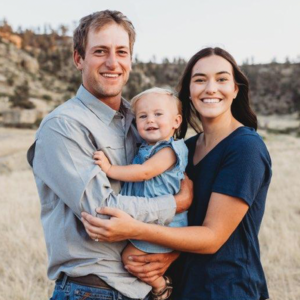Glacier National Park will reopen the Avalanche Campground this year. Avalanche, Two Medicine and Many Glacier campgrounds will become advance reservation only through Recreation.gov. All campsites at Avalanche and Two Medicine will become available on March 1.
Bozeman’s pay-what-you-can restaurant, the Fork and Spoon is looking for help combating the rise of food prices. The Human Resources Development Council, which runs the restaurant, announced this week a fundraiser to try to match a $10,000 gift given to Fork and Spoon from an anonymous donor. The 10-week drive to raise $1,000 a week began on Valentine’s Day.
The next round of Glacier National Park vehicle registrations begins on Wednesday, March 1 at Recreation.gov. Reservations will be available for the “primetime” month of July. Glacier has expanded its reservation system starting July 1 to include Two Medicine and the Many Glacier areas of the park. The park will release the August block on April 1 and then the early September block on May 1. After Sept. 10, reservations aren’t required in any area of the park
The Columbia Falls City County Planning Board has voted to deny a proposed 180-unit development. The Board cited concerns including traffic, wetlands, the high water table and effects on the wildlife corridor. The proposed subdivision is located east of the Flathead River.
Terry and Punki Bullis have sold Bullis Mortuary in Hardin to Steeve and Valerie Kirkegard, The name of the business will remain the same.
The UPS Store, located north of Walmart in Williston, has posted a sign on their door announcing their closure. The closure only applies to the shipping store, which is a franchise ct. The Williston UPS warehouse will still conduct business as usual.
Glacier National Park announced last week the launch of a permitting system for reserving backcountry campsites. The digital system comes as park officials report a marked increase in applications for backcountry campsites. The new process for the park’s advance wilderness camping permits replaces a manual lottery system that officials said employees could no longer maintain. Backcountry campsites will be released for advance reservations on March 15. The online system only accommodates groups of one to four campers per permit.
A Black Rifle Coffee Company location has opened in downtown Kalispell. The 4,600 square foot coffee shop offers grab and go items, two different espressos, three drip coffee roasts, and 12 pour over roasts with names like Space Bear, Gunship, and AK-47.
The Homestake Pub at 1107 Utah Ave., in Butte has opened for business. Owners Jean Beht and Kyle O’Hearn bring over 50 years of experience to the new venture.
The Glendive Elks Lodge #1324 has announced the closure of Gunners Ridge and its event center this week. The organization has confirmed its intention to sell the business, Gunners Ridge Bar & Grill
MSU has set a new spring enrollment record with 15,717 students attending classes this term, as well as seeing the highest fall-to-spring student retention in a decade.
In January, In Gallatin County, compared to January 2022, median sales prices decreased 1.7%, from $812,750 to $799,000. Closed sales fell 26.4%, from 72 to 53. The median number of days homes spent on the market was significantly higher than last year’s extreme low, jumping 1000%, from 5 to 55. The average percent of list price received by sellers fell slightly by 1.7%, from 97.9% to 96.2%. The median price per square foot sold decreased 11%, from $368 to $327. Pending sales decreased slightly by 6%, from 84 to 79. New listings increased 17.1% from 82 to 96. End of month inventory continued to rise, increasing 161.5%, from 91 to 238. The month’s supply of inventory, which is an estimate of the time it would take to sell off the existing inventory, increased 255.3%, from 1.3 to 4.5 months. In general, a balanced market is considered to be between 5 and 6 months, less than is considered a sellers’ market and more is considered a buyers’ market.
Laurel and Lockwood both ranked near the top of the most affordable placed to live according to a study done by SmartAsset. Laurel ranked in first place of affordability with an affordability index of 36.78 based on such housing costs as closing fees, property tax, insurance, and annual mortgage payment. The average annual mortgage payment in Laurel is $9,532 and the median income is $56,902. Lockwood was ranked fifth most affordable after Miles City, Anaconda, and Glendive. Lockwood had an affordability index of 34.06 based on an average mortgage payment of $10,928 and median income of $62,572. Butte, Havre, Helena Valley, Lewistown and Evergreen were also in the top ten of the most affordable communities in Montana.


